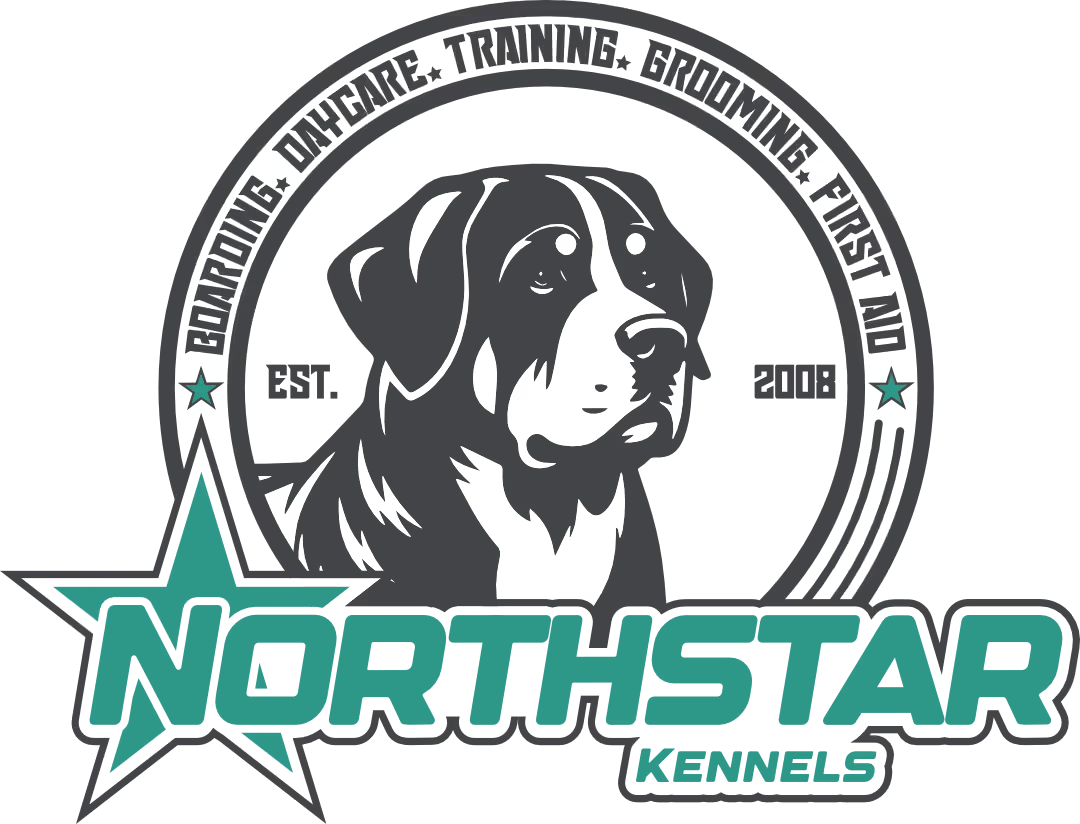
Northstar Kennels takes your dogs wellness seriously, this is why in addition to our dog boarding, training and grooming programs we also offer Red Light Therapy.
Our specially trained and certified staff (through the Assosciation Of PEMF Professionals) use the Helio Pet Red Light Therapy System and the “Gospel’s Light Therapy Pad” from Equine Light Therapy to help your Canine Companion feel the best. Whether they are dealing with the mires of old age and arthritis, recovering from surgery, are dealing with various skin conditions, or have sustained an injury redlight therapy can be a good option on the road to recovery.
You can book your consultation and therapy sessions either through logging in on our page, or by reaching out to us either by phone or at 780-942-4555, info@northstarkennels.com respectively.

Benefits of Red-Light Therapy for Dogs: A Comprehensive Guide
What Is Red-Light Therapy?
The Science Behind Red-Light Therapy for Dogs
At the heart of red-light treatment is its ability to activate cellular function. Red and NIR exposure to canines causes their wavelengths to be absorbed by the mitochondria or energy-producing parts of cells. The light is taken up, causing a cascade of beneficial biochemical processes:
Enhanced Cellular Power Generation:
The mitochondria use up taken in light to boost adenosine triphosphate (ATP) production, used in cellular repair and rebuilding.
Reduction in Inflammatory Molecules:
Red light reduces excessive nitric oxide (NO), a molecule that prevents cellular respiration and slows the process of healing.
Promotion of Tissue Regeneration:
Red light treatment has been shown to increase the production of growth factors, fibroblasts, and collagen. This in turn increases new tissue formation, whether it be bone or skin cells.
These mechanisms work synergistically to promote natural processes of healing, reduce inflammation, and promote blood circulation, all of which are crucial to maintaining a healthy dog and accelerating recovery after injury.
Historical Background and Veterinary Adoption
The clinical application of red-light treatment was introduced in the 1960s when preliminary studies confirmed its potential in models in animals. In 1967, experiments conducted by Dr. Endre Mester on mice confirmed that red light exposure would produce more speedy hair growth—a revelation that paved the way for more studies in veterinary application. Red-light treatment evolved over the next few decades from experimental procedures to a widely accepted veterinary modality. Today, approximately 20% of veterinary practices employ a method of photobiomodulation to treat a variety of ailments in dogs and other animals.
With the advancement of LED technology, new devices for home use by pet owners have been developed. Red-light therapy crates, for instance, now allow owners of dogs to treat their animals outside of a clinical environment, making exposure to this promising treatment more accessible.
How Does Red-Light Therapy Work for Dogs?
The beneficial effects of red-light treatment result from its action on a dog’s cellular processes. The description of the key mechanisms in action is given below:
Mitochondrial Activation
Red and NIR wavelengths of light get absorbed in the mitochondria, causing a surge in ATP production—the cellular energy currency that powers all cellular processes. The energy surge permits more efficient tissue repair and regeneration.
Enhanced Blood Flow
Improved circulation is a natural byproduct of red-light treatment. Increased blood flow brings more oxygen and nutrients to tissues, accelerating injury healing and reducing swelling.
Anti-Inflammatory Effects
Red-light therapy also regulates the immune response in a way that minimizes inflammatory markers. This function not only relieves pain but also inhibits chronic disease progression, including osteoarthriti
Stimulation of Cellular Repair:
The therapy stimulates cells to produce such key proteins as collagen and growth factors that are responsible for wound healing and tissue reconstruction. In canine patients, it brings more speedy healing of wounds, scrapes, and surgeries
Red-Light Therapy Health Benefits for Dogs
Helps in Wound Healing
Dogs, like their human counterparts, can suffer injuries brought on by accidents, sports, or even regular play. Red-light treatment has been utilized to expedite the process of healing after surgeries and traumatic injuries with remarkable results. As a case in point, it was observed in studies that dogs that underwent spinal surgery to treat intervertebral disk herniation ambulated more rapidly and experienced less discomfort when red-light treatment was administered after their surgeries [5]. The reason red-light treatment expedited healing is that red-light treatment can activate tissue repair and boost cellular energy production.
Improved Post-Surgical Recovery
In post-surgical cases, red-light treatment plays a key role in minimizing scarring and accelerating wound healing of wounds after incisions. In dachshund canine studies, red-light treatment has been found to not only beautify the aesthetic character of scars after surgery but also to shorten the period of recovery. The treatment is therefore a helpful addition to regular post-operative treatment.
Support of Chronic Pain and Arthritis
Arthritis is a common disease in older animals. Chronic joint pain can dramatically impair a dog's mobility and overall quality of life. Red-light treatment is a medication-free approach to managing pain that reduces swelling and enhances function in joints. In a trial of red-light treatment in dogs with elbow arthritis, red-light treatment caused significant reductions in pain scores and permitted many of the animals to be removed from their pain medications. The same effects have been observed in studies of osteoarthritis and arthritic pain, in which red-light treatment was found to enhance mobility and reduce discomfort.
Improved Tendon and Ligament Recovery
Beyond joint pain, red-light treatment has also been shown to be beneficial in the treatment of injuries to soft tissues. In equine research, red-light treatment was shown to be beneficial in reducing pain, swelling, and lameness in tendon and ligament injuries. Although these studies were conducted in equines, the same mechanisms hold in dogs, making red-light treatment a promising treatment for canine patients who suffer from tendon injuries and ligament sprain.
Skin Health and Reduced Inflammation
Certain dog breeds are also more likely to suffer from skin disease, especially in the areas around their paws, in which redness and lesions become prevalent. In a controlled trial of dogs afflicted with pododermatitis, red-light treatment was found to hasten the healing of lesions in the skin and to dramatically decrease recurrences of redness. All of these effects make red-light treatment a helpful means of managing chronic canine dermatological disease, leading to healthier-looking skin and a more lustrous coat.
Overall Quality of Life
Proactive use of red-light treatment can lead to better canine health in general. Regular sessions can lead to better sleeping patterns, mental function, and bone health. Owners of pets typically report that their animals become more active and ambulatory after regular red-light treatment sessions, leading to a higher quality of life in their older age.
Practical Applications in Veterinary Medicine
Rehabilitation
In rehabilitation facilities, red-light treatment is utilized regularly in conjunction with total treatment programs to help canine patients recover after injury or surgery. As it reduces swelling and stimulates cellular repair, it is a wonderful supplement to physical therapy and other forms of rehabilitation.
Chronic Condition Management
For dogs afflicted with chronic diseases like osteoarthritis, red-light treatment is a medicine-free, harmless alternative to chronic medication. By reducing pain and enhancing joint function, it can maintain mobility and independence in older animals.
Wound and Cutaneous Lesion Healing
Whether dealing with postoperative wounds, scrapes, or chronic skin ailments, red-light treatment is a highly effective treatment method. The collagen stimulation and cellular regeneration that is caused by the treatment reduce the time it takes to heal, reducing downtime and discomfort.
Proactive Health Maintenance:
Beyond treating existing diseases, more veterinarians also recommend regular red-light therapy sessions as a preventive treatment. Such preventive treatment can prevent chronic disease formation and sustain health in general.
Safety Considerations
Red-light therapy is also found to be generally harmless in canine patients, though side effects are rarely encountered. There are a few precautions that need to be taken to make sure that treatment is successful:
Safety Considerations
Red-light therapy is also found to be generally harmless in canine patients, though side effects are rarely encountered. There are a few precautions that need to be taken to make sure that treatment is successful:
Prior Conditions:
Dogs with cutaneous or photosensitive disease need a checkup with a veterinarian prior to starting red-light treatment. Seizure-prone or cancer-treated dogs also need to be taken into account.
Managed Use:
Especially during initial sessions, it is a good practice to watch over your dog to determine that treatment is tolerated correctly. Overexposure is generally not a concern in red-light treatment, but careful surveillance can be employed to optimize treatment parameters.
Red Light Therapy Service by Northstar Kennels
The Northstar Kennels already established for their commitment to healthy, happy canines, is introducing red light therapy to their portfolio of wellness services. The new treatment is meant to complement veterinary treatment with a distinct, non-invasive method that can:
Speed Up Recovery:
Red light therapy can be used to shorten recovery time and alleviate discomfort in a dog that is recovering from injury or surgery.
Alleviate Chronic Pain:
Chronic ailments such as arthritis in dogs can be alleviated by regular treatment that reduces joint pain and generally increases mobility.
Promote Overall Health:
In addition to its treatment potential, red light therapy also enhances immunity and stimulates tissue regeneration, enhancing one's overall health.
At Northstar Kennels, incorporating red light treatment in their services is a reflection of their holistic approach to caring for animals. The company is offering this treatment under professional guidance to ensure that each treatment is personalized to meet each dog’s needs and is applied safely in line with veterinary advice.
Future Research and Trends
As research on red-light treatment increases, a new understanding of its mechanisms of action and applications is to be anticipated. Current studies propose to better personalize treatment procedures, define long-term effects, and unveil new applications aside from wound healing and pain relief. Developments in LED technologies and wearable devices hold promise to facilitate even more personalized and efficient treatments in the coming time, providing veterinarians and owners of animals with better tools to support canine health.
The growing evidence in peer-reviewed literature not only attests to the existing benefits of red-light treatment but also highlights its potential to be a cornerstone of integrative veterinary medicine. Red-light treatment is likely to be combined in the future with other modalities, such as physical rehab and dietary support, to treat chronic disease in dogs in a more integrated manner.
Conclusion
Red-light therapy is a non-invasive, efficient, and safe treatment that is distinct in its use in canine patients. With red and infrared light, it induces cellular energy production, reduces inflammation, and increases tissue repair. As a treatment to expedite postoperative recovery, to treat chronic conditions such as arthritis, or to support overall skin health, red-light therapy is a promising alternative or supplement to traditional treatment.

References
- Godine RL. Low-level laser therapy (LLLT) in veterinary medicine. https://www.liebertpub.com/doi/10.1089/pho.2013.9867
- Gross DM. Introduction to therapeutic lasers in a rehabilitation setting. https://www.sciencedirect.com/science/article/abs/pii/S1938973614000397
- Pryor B, Millis DL. Therapeutic laser in veterinary medicine. https://www.sciencedirect.com/science/article/abs/pii/S0195561614001351
- Hochman L. Photobiomodulation Therapy in Veterinary Medicine: https://www.sciencedirect.com/science/article/abs/pii/S1938973618300011
- Draper WE, Schubert TA, Clemmons RM, Miles SA. Low-level laser therapy reduces time to ambulation in dogs after hemilaminectomy: a preliminary study. https://onlinelibrary.wiley.com/doi/10.1111/j.1748-5827.2012.01242.x
- E. Merigo, P. Vescovi, M. Margalit, E. Ricotti, S. Stea, M. Meleti, M. Manfredi, and C. Fornaini, “Efficacy of LLLT in swelling and pain control after the extraction of lower impacted third molars https://pmc.ncbi.nlm.nih.gov/articles/PMC4416144/


